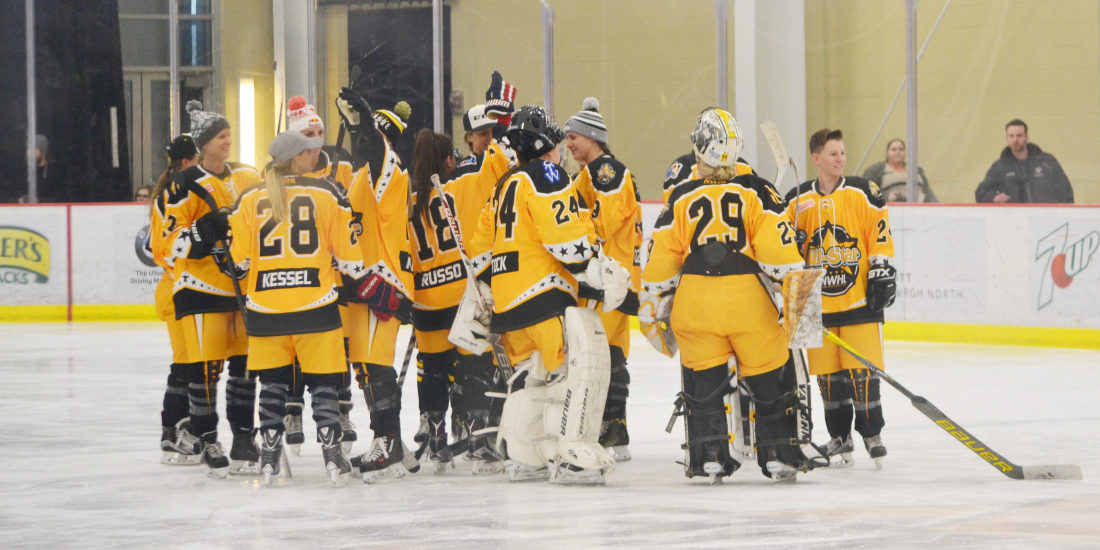If you had asked people over ten years ago to name a women’s hockey player they probably couldn’t do it; even with names like Julie Chu, Hailey Wickenhouser, Charline Labonte, and Angela Ruggeiro. None of these women are small names and all are extremely accomplished in their own right, but ten years ago women’s hockey wasn’t nearly as big or popular as it is right now.
There have been women who have played in men’s leagues, who have joined them in tryouts, exhibition games, and practices. Shannon Szabados, Hilary Knight, and Manon Rhéaume just to name a few. Even though Knight is one of the best women hockey players in the game, she will probably never be seen in the starting lineup for an NHL game. While Szabados did play in a men’s league it was the lower-tiered SPHL. And Rhéaume just played in one period of one exhibition game in 1992 and then another one in 1993. All these women are Olympic medalists and have done so much for the game.
But times are different now. There have been no women in exhibition games or NHL practices for a while now. In North America, there’s not many women playing in men’s leagues. It sounds discouraging at first, the fact that theses women have nowhere to play.
Until you remember there is not one, but two professional women’s hockey leagues in North America. The Canadian Women’s Hockey League and the National Women’s Hockey League.
The CWHL just completed its tenth season where the Les Canadiennes took home the Clarkson Cup after making the finals three years in a row and not winning. The Canadiennes team includes a few names like Marie-Philip Poulin, Caroline Ouellette, and Julie Chu. The CWHL All-Star game was held at the Air Canada Centre with almost seven thousand fans and the CWHL Clarkson Cup Final was expected to draw almost four thousand fans.
In the spring I went to the NCAA Men’s Hockey Regionals in Cincinnati where there were probably a few thousand people, if that. When people say women’s hockey doesn’t sell they are lying to you.
The CWHL, starting next season, will have a new team in China that will be owned by the Kunlun Red Star hockey club of the Kontinental Hockey League. Kelli Stack, Noora Räty, and Zoe Hickel will be paid as “Sports Ambassadors”. There is no information yet if all players in the CWHL will be paid as hockey players, although the goal was to pay their players this coming season. We’ll have to wait and see what the numbers are later this summer or fall.
In the United States there is the National Women’s Hockey League that a few months ago saw its second season finish with the crowning of the Buffalo Beauts as Isobel Cup Champions. The Beauts were the underdog three seed, defeating the New York Riveters before completing the upset against the undisputed number one seed Boston Pride.
The Beauts have a few names from the United States Women’s National Team that might sound familiar; Megan Bozek, Emily Pfalzer, and Brianne McLaughlin, who made sixty saves in the Isobel Cup Final.
While the NWHL is fairly new and still growing, there’s lots of reason to think that it will be growing even more. Director of the NWHLPA, Anya Battaglino, said, “Pittsburgh is such a strong place for women’s hockey. And there are so many places that could substantiate a women’s team and continue to help grow and develop the game.” Making it seem like Pittsburgh is next on the NWHL’s radar, although Commissioner Dani Rylan said the league would not add an expansion team until the 2018-2019 season, so after the next up coming season.
In February, the NWHL had their All-Star Game in Pittsburgh! I was actually able to go with my fiancé and one of our friends and it was a great time. They had the skills competition which was lots of fun and then an autograph session on Saturday, then on Sunday was the actual game. Tickets for the All-Star Game were sold out in advance and it got very loud inside the UPMC Lemieux Sports Complex.
There weren’t seven thousand people there, but for a league in only its second season there were lots of people there from all ages and genders.
These leagues are just the beginning for women’s hockey in North America. These leagues will only open the door to thousand more women hockey players graduating from college who wouldn’t have had an opportunity to play otherwise. Non-National Team players are getting publicity and popularity that they wouldn’t have seen otherwise. The women in these leagues also set up their own skills camps during the summer where they help young girls develop. Women’s hockey is growing, not just professionally, but from top to bottom.
These leagues are exactly what the hockey world needs right now to show that every kid who plays hockey, not just the boys, can become a professional hockey player.
We don’t need women playing in men’s leagues, although if they want to that’s perfectly okay, to show that these women can flat out play. We need leagues of their own.

